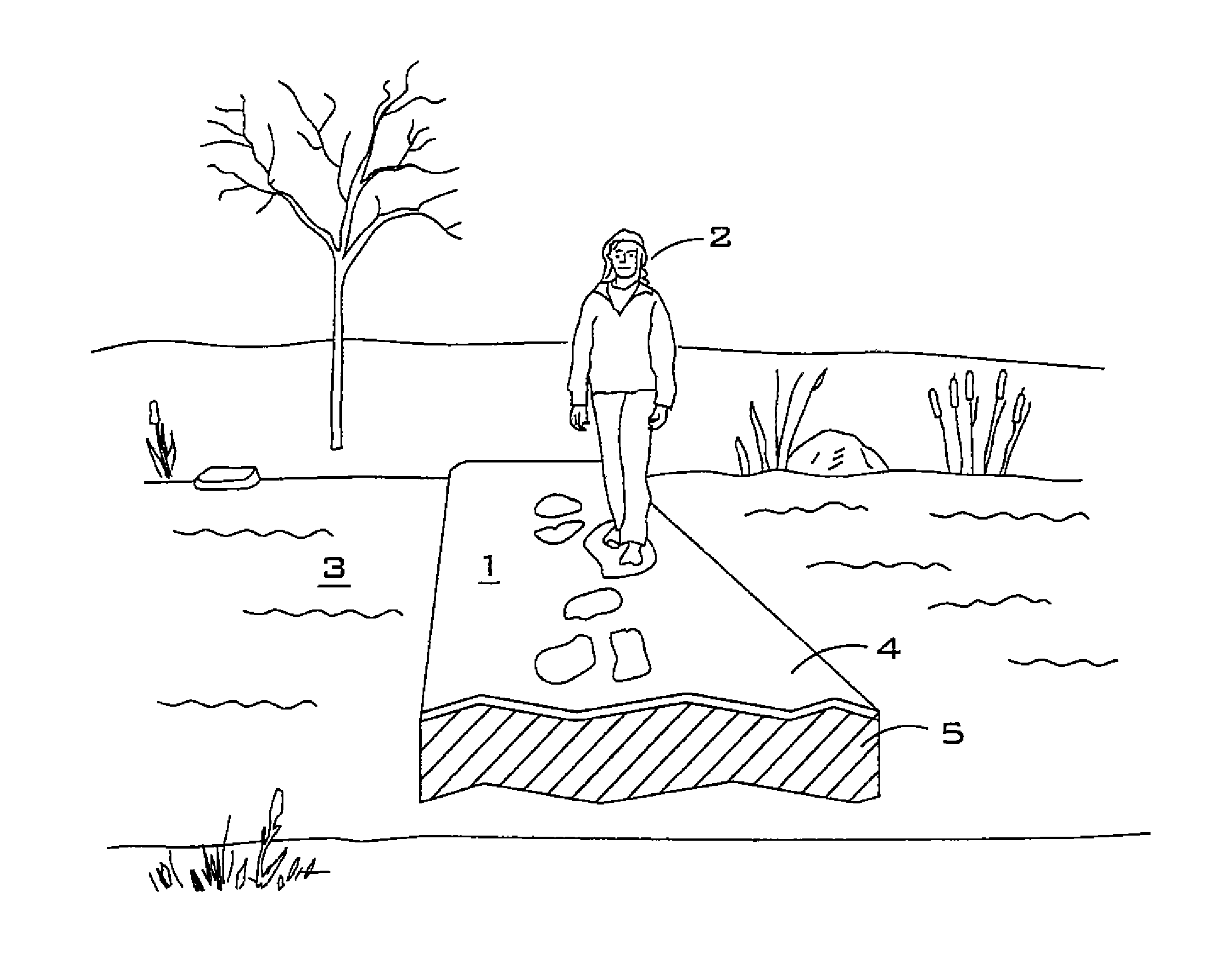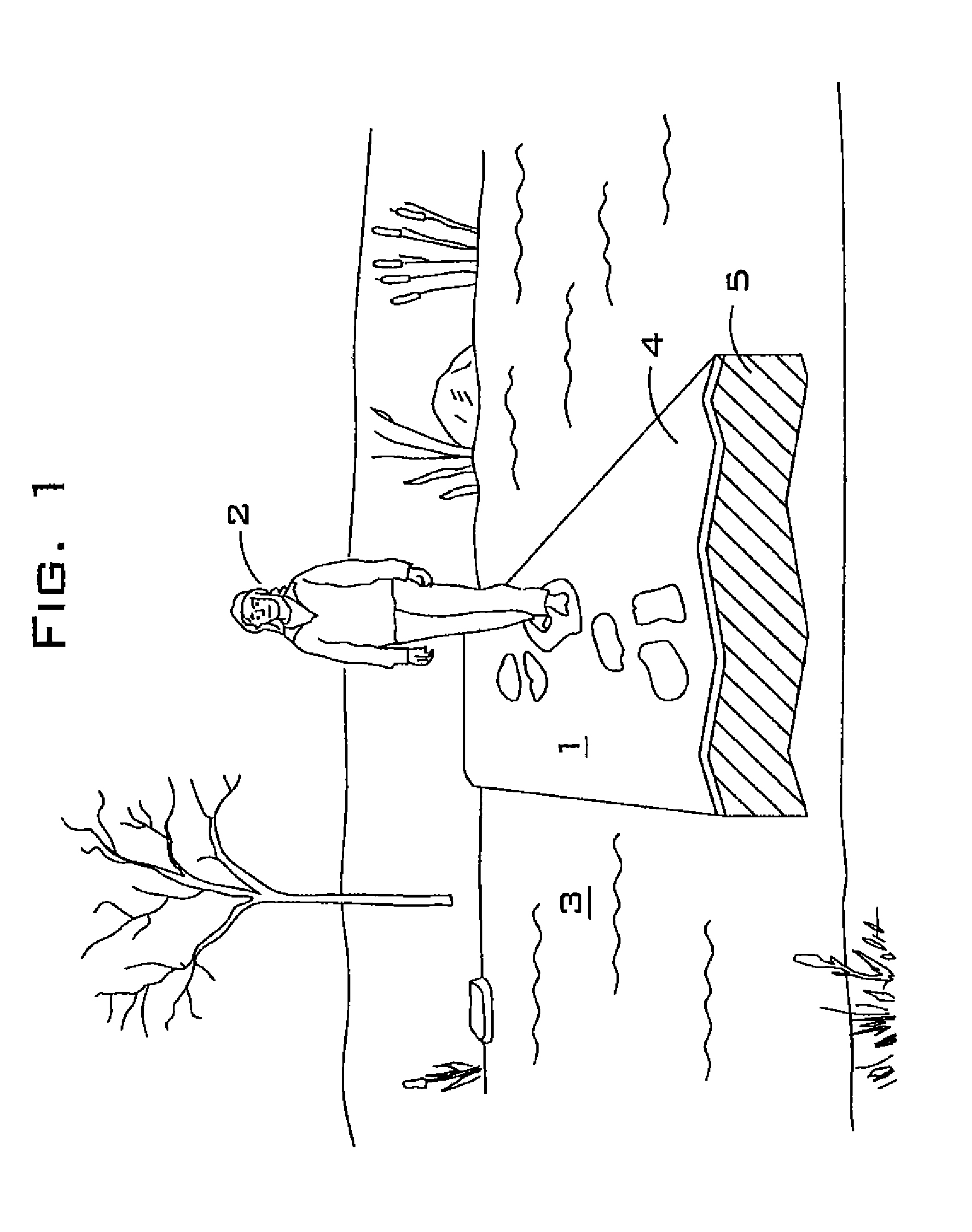Highly buoyant and semi-rigid floating islands
a floating island, high-floating technology, applied in the field of floating islands, can solve the problems of low aesthetic value at locations, difficult or expensive installation of piling-supported bridges, and art floating platforms that also tend to gradually lose buoyancy over time, and achieve low permeability, low-oxygen microbial growth conditions, and promote a range of microbial growth conditions
- Summary
- Abstract
- Description
- Claims
- Application Information
AI Technical Summary
Benefits of technology
Problems solved by technology
Method used
Image
Examples
Embodiment Construction
[0062]FIG. 1 illustrates a first embodiment of the invention. In this embodiment, the invention is used as a floating walkway to cross a stream. One end of the island has been removed to show the internal construction. As shown, floating walkway 1 is used by pedestrian 2 to cross water body 3. In this embodiment, rigidity for the floating walkway 1 is preferably provided by top covering 4, which is installed above interior section 5. Permeable and buoyant interior section 5 is preferably located beneath semi-rigid top covering 4. Top covering 4 is preferably impermeable to water, and impenetrable by plant stems or roots. Internal section 5 is preferably constructed so as to be buoyant, permeable to water, and penetrable by plant roots. In one embodiment, internal section 5 is comprised of nonwoven polymer matrix that is injected with buoyant polymer foam. In another embodiment, internal section 5 is comprised of bi-cellular polymer foam.
[0063]Plants (not shown) may optionally be gro...
PUM
| Property | Measurement | Unit |
|---|---|---|
| thick | aaaaa | aaaaa |
| thick | aaaaa | aaaaa |
| lengths | aaaaa | aaaaa |
Abstract
Description
Claims
Application Information
 Login to View More
Login to View More - R&D
- Intellectual Property
- Life Sciences
- Materials
- Tech Scout
- Unparalleled Data Quality
- Higher Quality Content
- 60% Fewer Hallucinations
Browse by: Latest US Patents, China's latest patents, Technical Efficacy Thesaurus, Application Domain, Technology Topic, Popular Technical Reports.
© 2025 PatSnap. All rights reserved.Legal|Privacy policy|Modern Slavery Act Transparency Statement|Sitemap|About US| Contact US: help@patsnap.com



